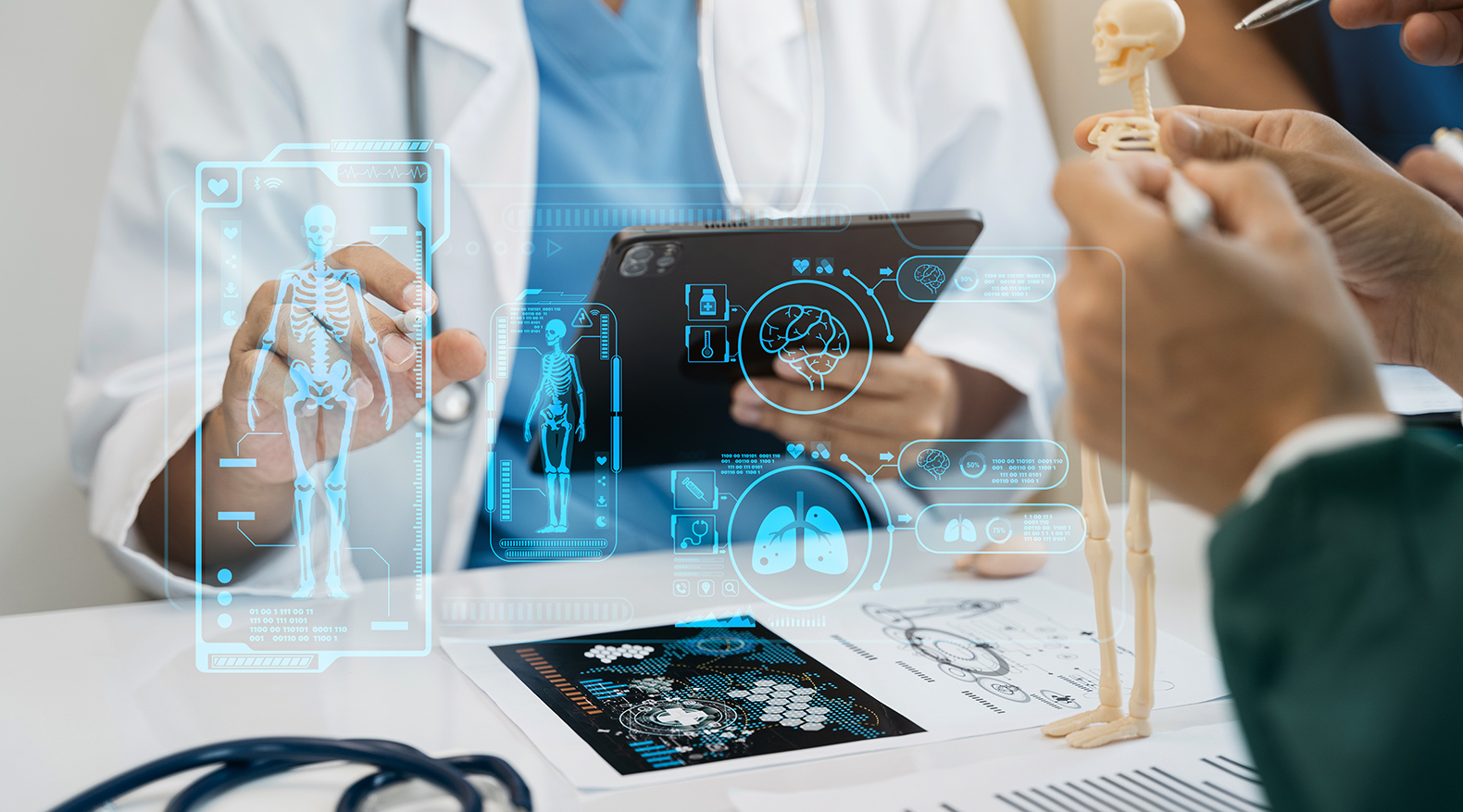How IoT Is Revolutionizing Healthcare: Benefits, Challenges & Future Outlook

The healthcare sector is experiencing a major shift, mainly fueled by the swift adoption of new technologies. Among these, the Internet of Things (IoT) stands out as a particularly impactful innovation. From wearable devices that monitor heart rates to interconnected machines that observe patients in real-time, IoT is fundamentally changing the manner in which healthcare services are provided and managed.
However, this shift is not just about new gadgets; it represents a deeper change in the way healthcare systems operate. By enabling smarter, data-driven decision-making, IoT is helping providers deliver better outcomes while giving patients more control over their health. In this article, we’ll explore the benefits of IoT in healthcare, highlight some commonly used devices, address key challenges, and take a closer look at the future of this exciting technology.
The Growing Role of IoT in Healthcare
The Internet of Things (IoT) in healthcare pertains to the utilization of internet-connected devices and systems for the collection, sharing, and analysis of data associated with health and wellness. These devices encompass a range from fitness trackers to sophisticated hospital equipment. However, when connected to secure networks, they provide real-time insights that help doctors, nurses, and patients make informed choices.
Healthcare has always been a data-heavy industry. Traditionally, much of this information was collected manually, which made it both slow and prone to error. However, IoT is changing that dynamic by automating the collection and sharing of data. For example, a smart insulin pump can automatically adjust dosage based on a patient’s glucose levels, reducing the likelihood of human error.
The result is a more proactive and preventive healthcare model, where issues can be detected early and interventions can be made before conditions worsen.
Benefits of IoT in Healthcare
The advantages of IoT in healthcare go far beyond convenience. It is transforming the entire care ecosystem in several important ways.
1. Improved Patient Monitoring
Remote patient monitoring constitutes one of the most significant benefits of the Internet of Things (IoT) within the healthcare sector. Wearable devices, including smartwatches, electrocardiogram (ECG) monitors, and blood pressure cuffs, are capable of continuously tracking vital signs and transmitting data to healthcare providers. This real-time monitoring facilitates early detection of abnormalities, thereby enabling prompt interventions and enhancing patient safety outcomes.
2. Enhanced Operational Efficiency
Hospitals and clinics represent intricate environments characterized by numerous interconnected components. Nonetheless, Internet of Things (IoT) devices have the potential to optimize operational efficiency by monitoring equipment, overseeing energy consumption, and automating routine tasks. For example, connected devices can notify staff when a machine needs maintenance, reducing downtime and ensuring that critical equipment is always available.
3. Personalized Care
IoT enables healthcare providers to tailor treatments based on a patient’s unique needs. Continuous data collection enables a more comprehensive understanding of a patient’s lifestyle, habits, and health patterns. This understanding facilitates the formulation of personalized treatment strategies that are both more effective and sustainable.
4. Cost Reduction
By preventing hospital readmissions and minimizing unnecessary visits, IoT can significantly reduce healthcare costs. Remote monitoring enables patients to stay at home while still receiving medical supervision, thereby reducing hospital occupancy rates and freeing resources for more critical cases.
5. Better Patient Engagement
With Internet of Things (IoT) devices, patients are transformed into proactive participants in their healthcare management. They are able to access real-time health data, establish personal health objectives, and receive medication reminders. This enhanced engagement frequently results in increased compliance and improved overall health outcomes.
Common IoT Devices in Healthcare
The variety of IoT devices in healthcare is expanding rapidly. Each serves a unique purpose, but collectively they contribute to a more connected healthcare system.
Wearables: Smartwatches and fitness trackers that monitor heart rate, oxygen levels, sleep patterns, and physical activity.
Remote Patient Monitoring Devices: Blood pressure monitors, glucose meters, and ECG monitors that send real-time data to doctors.
Smart Implants: Pacemakers or insulin pumps that adjust automatically based on the patient’s condition.
Connected Inhalers: Devices that track inhaler usage and ensure asthma or COPD patients are following their treatment plan.
Hospital Equipment Trackers: Sensors that help locate critical equipment like wheelchairs, ventilators, and infusion pumps within hospital premises.
Together, these devices form an interconnected healthcare ecosystem that enhances accuracy, speed, and the overall quality of care.
Challenges of IoT in Healthcare
While the benefits are clear, there are several challenges of IoT in healthcare as well. Addressing these concerns is crucial to unlocking the full potential of this approach.
1. Data Security and Privacy
Healthcare data is highly sensitive, and IoT devices collect massive amounts of it. However, without proper safeguards, this data becomes vulnerable to cyberattacks. Ensuring encryption, secure networks, and compliance with regulations such as HIPAA is essential.
2. Interoperability Issues
Different manufacturers often build IoT devices using their own standards. This deficiency in interoperability hinders the capacity of healthcare systems to effectively integrate devices seamlessly. As a result, data silos can form, reducing the effectiveness of connected care.
3. Cost of Implementation
Although IoT can save costs in the long run, the initial investment is significant. Hospitals must purchase devices, upgrade infrastructure, and train staff. However, for smaller healthcare providers, these costs can be a major barrier.
4. Data Overload
With IoT generating vast amounts of data, healthcare providers face the challenge of filtering out the noise and focusing on actionable insights. However, without robust analytics tools, the sheer volume of data can become overwhelming.
Security and Privacy Issues with IoT in Healthcare
Data protection constitutes a paramount concern in the deployment of Internet of Things (IoT) technologies within healthcare settings. Each connected device serves as a potential vulnerability site for cybercriminal infiltration. Furthermore, security breaches may result in the exposure of patient records, the interruption of hospital operations, and a subsequent erosion of trust in the healthcare system.
To address these risks, healthcare organizations must adopt a layered security approach. It includes strong encryption, multi-factor authentication, regular software updates, and continuous monitoring for suspicious activity. Additionally, educating patients and staff about safe practices, such as changing default passwords and avoiding unsecured networks, can significantly strengthen defenses.
The Future of IoT in Healthcare
The future of IoT in healthcare appears promising, with notable advancements expected. AI and machine learning are projected to play a larger role by analyzing data from IoT devices to provide predictive insights. For example, AI could predict a potential heart attack based on subtle changes in a patient’s vital signs, hence allowing for preventive treatment.
Moreover, 5G technology will enhance the capabilities of IoT by enabling faster data transmission with minimal latency. It will make real-time remote surgeries and advanced telemedicine applications more practical.
Furthermore, we can also expect greater standardization, which will improve device interoperability and reduce current integration challenges. As costs come down and infrastructure improves, IoT adoption will expand beyond large hospitals to smaller clinics and even home-based care.
Conclusion
In conclusion, the Internet of Things (IoT) in healthcare represents more than merely a technological trend; it constitutes a revolution that is transforming the delivery of care. This encompasses remote monitoring, personalized treatments, operational efficiency, and cost savings, which offer considerable advantages. Nevertheless, challenges such as security risks, substantial implementation costs, and interoperability issues must be meticulously managed to guarantee a secure and effective adoption.
Looking ahead, the integration of AI, machine learning, and 5G will make IoT even more powerful, paving the way for smarter, faster, and more personalized healthcare solutions. All in all, for both providers and patients, the promise of IoT in healthcare is nothing short of transformative.
Secure healthcare data and enable trusted interoperability with Blockchain.
